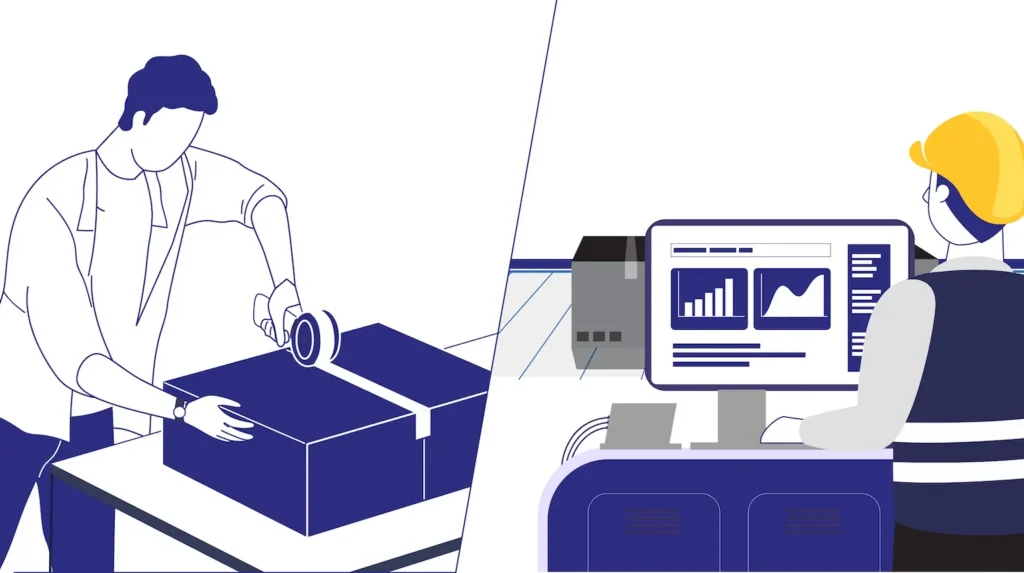
In the packaging industry, businesses often face the decision between traditional (manual) packaging methods and automated solutions. A critical choice between investing in modern packers and sticking with traditional packaging methods. The best choice depends on various factors like the nature of the products, production volume, budget, and future scalability. Each approach has its own set of advantages and disadvantages, making the choice dependent on various factors such as production volume, budget, and product characteristics while consulting with the best in the industry to reach the highest efficiency levels.
Traditional Packaging Methods
Traditional packaging typically involves manual labor or semi-automated processes. Common methods include:
- Hand Packing: Products are manually placed into packages or manually packaged using hand-held tools, allowing flexibility and a personal touch.
- Semi-Automatic Machines: These machines although have a certain level of automation yet require significant human intervention for operation, combining manual and automated processes.
- Conveyor Systems: While automation and pneumatics facilitate the transfer movement, they still rely on manual operations and packing.
Pros
- Lower Initial Costs: Traditional methods often require less upfront investment, making them accessible for small to medium-sized businesses.
- Flexibility: Hand packing can accommodate various product types and sizes without needing complex machinery adjustments.
- Personal Touch: Manual processes can create unique packaging that appeals to niche markets.
Cons
- Labor Intensive: Reliance on human labor can lead to higher long-term costs, safety complexities, and potential inefficiencies.
- Inconsistency: Human error can result in variability in packaging quality and can impact delivery and project timelines.
- Limited Scalability: Increasing production often necessitates hiring more task force, which can be logistically challenging and costly.
Automated Packaging Solutions
Automated packaging involves machinery that performs most or all of the tasks with minimal human intervention. This includes fully automatic systems that manage the entire processes:
- Automatic Strapping: Enables automated strapping of all shapes and sizes of materials requiring custom packaging materials. These machines also pack hot rolled steel coils within minutes without any human intervention.
- Automatic Wrapping: Machine wrapping varies in setup, environment, product nature, logistics, and more. Our automated wrapping machines can be customized to perform tasks of different intensities and with variable consumables.
- Automatic Transfer Systems: End-to-end packaging, transfer, and storage automation is enabled with a pre-set program that can work with zero to little human supervision.
- Automatic Taping & Labeling: Fully automated Straping-wrapping-taping-labeling with no manual intervention is enabled with our automated taping & labeling machines apart from independent processes being handled separately.
Pros
- Speed and Efficiency: Automated systems can significantly increase throughput compared to manual methods, producing more packaged products in less time.
- Consistent Quality: Automation minimizes human error, ensuring each package meets the same standards and meets timeline requirements every time.
- Reduced Labor Costs: While the initial investment may be high, automation can lead to lower operational costs over time due to reduced labor needs.
Cons
- Speed and Efficiency: Automated systems can significantly increase throughput compared to manual methods, producing more packaged products in less time.
- Consistent Quality: Automation minimizes human error, ensuring each package meets the same standards and meets timeline requirements every time.
- Reduced Labor Costs: While the initial investment may be high, automation can lead to lower operational costs over time due to reduced labor needs.
The Cost of Convenience: Traditional vs. Automated Solutions
The choice between traditional and automated packaging solutions depends on specific business needs. Traditional methods may suit smaller operations or those requiring flexibility and a personal touch. In contrast, automated solutions are ideal for growing mid-scale to larger businesses focused on efficiency, consistency, and scalability. Companies must evaluate their production volume, budget constraints, and product characteristics to make an informed decision that aligns with their operational goals.
Still confused about whether this is the right choice for you?
Talk to our experts!
MVS ACMEI prioritizes efficiency and cost saving for businesses that look forward to the long game in the industry. Therefore, we provide industrial packaging solutions that are manual, semi-automatic, and fully automatic. We also enable complete customization of the solutions and services chosen for you and mold them for your requirements (small-mid-huge!).
Let’s connect to discuss automation possibilities for you.

